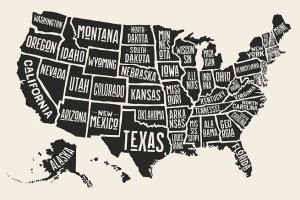 Recent events, such as the Coronavirus Disease 2019 (COVID-19), highlight the need for public health preparedness programs at the local, state, and federal levels. A primary role of public health agencies is to help protect the public from such disease outbreaks and disasters. However, it can be difficult to know just how prepared we are for the next emergency or disaster.
Recent events, such as the Coronavirus Disease 2019 (COVID-19), highlight the need for public health preparedness programs at the local, state, and federal levels. A primary role of public health agencies is to help protect the public from such disease outbreaks and disasters. However, it can be difficult to know just how prepared we are for the next emergency or disaster.
One way we gauge our level of preparedness is through the Trust for America’s Health (TFAH) annual report entitled Ready or Not: Protecting the Public’s Health from Diseases, Disasters, and Bioterrorism 2020. This report ranks each state’s level of public health preparedness according to top-priority indicators, including incident management, cross-sector community collaboration, institutional quality, water security, countermeasure utilization, and patient safety.
TFAH puts Arizona in the top tier of states for public health and emergency management accreditation. Our state has received recognition from both the Public Health Accreditation Board (PHAB) and the Emergency Management Accreditation Program (EMAP). This illustrates our state’s commitment to building strong partnerships and whole community preparedness. Arizona is also a participant in the Nurse Licensure Compact (NLC). This agreement allows registered and practical nurses from other participating states to practice in Arizona, which would greatly help our health care system during a public health emergency.
According to the TFAH report, seasonal flu vaccination rates in Arizona rose nearly seven percentage points to 45.6%. Although we have room for improvement, this marked increase is evidence of the hard work by our immunization and health care partners across the state. Additionally, Arizona received a top grade for water security. Only 1% of Arizona’s population used a community water system in violation of health-based standards. This is far better than the national average of 6.5%.
The state’s health care system is also making significant strides in patient safety. The percentage of hospitals receiving an “A” grade in the hospital safety assessment by the Leapfrog Group improved by 4%. This assessment looks at multiple, evidence-based metrics including healthcare-associated infections, available beds and qualified staff in intensive care units, patients’ assessments of staff communication and responsiveness, and a hospital’s culture of error prevention.
In many ways, our state is better prepared to face public health emergencies and disasters than it was a year ago. Our improving TFAH scores and our commitment to whole community preparedness illustrate this point. However, despite our successes, preparedness is a never-ending endeavor. We must continue to build partnerships, increase our statewide response capabilities, and prepare for the unknown. By working together towards all-hazards preparedness, we can strengthen community resiliency and help protect the health and wellness of all Arizonans.









